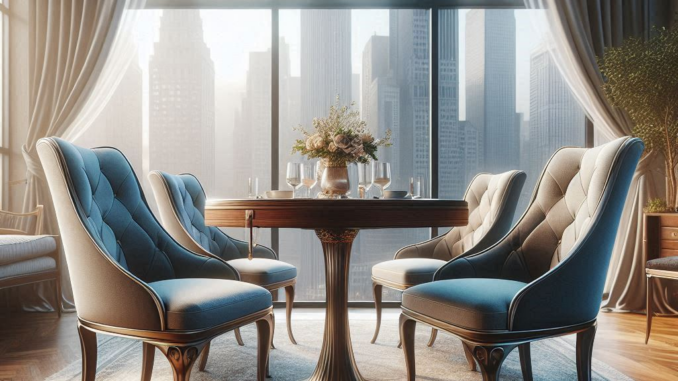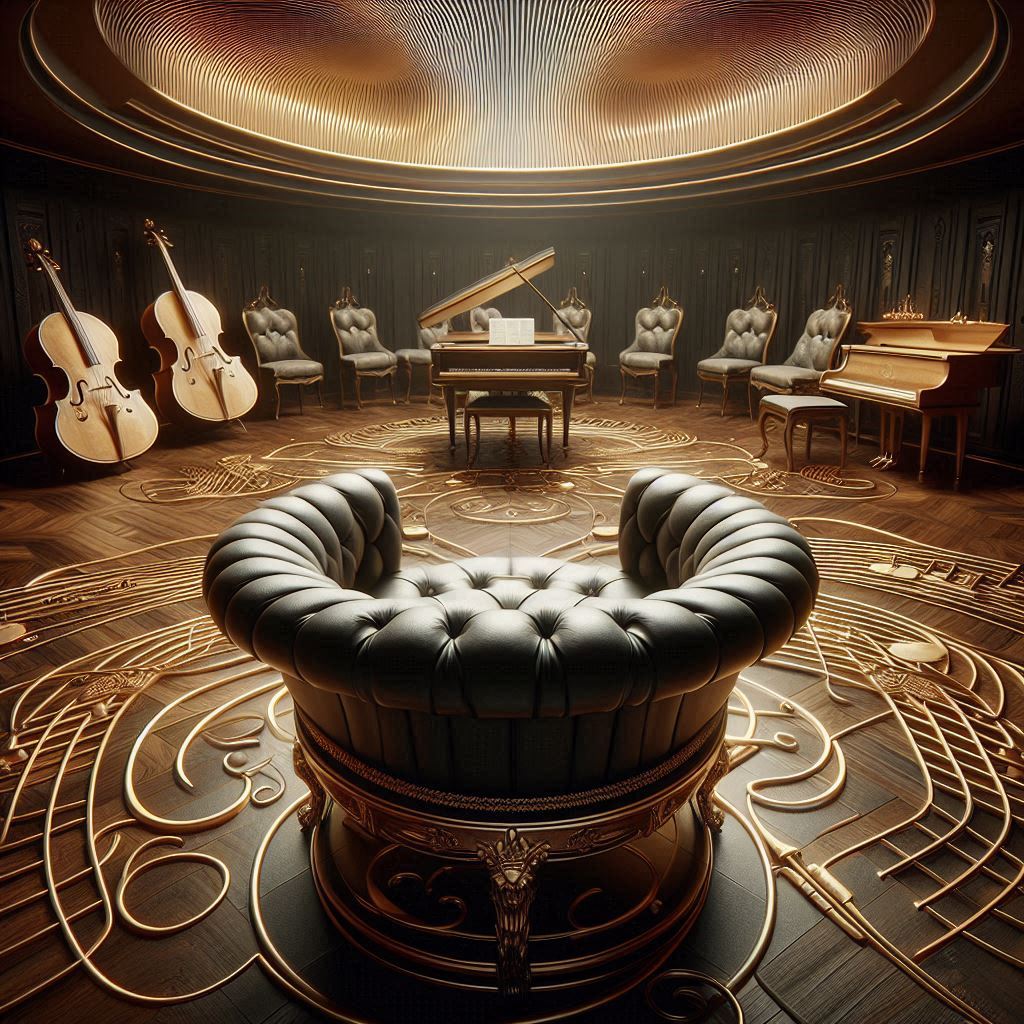
Can You Describe a Chair?
Introduction
Chairs are everywhere in our lives, but we often don’t think much about them. Whether you’re buying furniture, writing a story, or just curious, knowing how to describe a chair can be really useful and interesting. In this blog post, we’ll explore all sorts of things about chairs, from the different types and what they’re made of to how they look and feel when you sit in them.
Quick Answer
To describe a chair, focus on its type (e.g., dining, office, armchair), materials (wood, metal, plastic, fabric), design (style, color, shape), and comfort features (padding, back support, armrests). Consider its purpose, size, and any unique characteristics that make it stand out.
Types of Chairs

Chairs come in many different shapes and sizes, each made for different uses and places. Here are some common types:
- Armchairs: These comfy chairs have places to rest your arms and are often found in living rooms.
- Dining Chairs: You’ll see these around dinner tables, made to be comfortable for eating meals.
- Office Chairs: These are built to support you when sitting for long hours, often with parts you can adjust.
- Rocking Chairs: These chairs are set on curved pieces that let you rock back and forth.
- Stools: Simple chairs, often without backs, that you might find at bars or in kitchens.
- Folding Chairs: These can be folded up for easy storage, great for events or small spaces.
- Bean Bags: Soft, squishy chairs filled with tiny beads that mold to your body shape.
- Recliners: Comfy chairs that let you lean back and put your feet up.
What Chairs Are Made Of
The stuff used to make a chair affects how long it lasts, how comfy it is, and how it looks. Here are some common materials:
- Wood: Gives a classic look and is strong. Examples are oak, walnut, and pine.
- Metal: Looks modern and lasts a long time. Often made of steel or aluminum.
- Plastic: Light and easy to shape, often used in modern-looking chairs.
- Fabric: Used to cover chairs and make them soft. Can be cotton, polyester, or other materials.
- Leather: A tough, smooth material that can make chairs look fancy.
- Wicker: Made from woven plant fibers, often used for outdoor furniture.
How Chairs Look
The way a chair looks is really important. Here are some things to think about:
- Style: Chairs can look old-fashioned, modern, or anything in between. Each style gives a different feeling to a room.
- Color: The color of a chair can match or stand out from the room. Plain colors go with anything, while bright colors make a big statement.
- Shape: The shape of the seat, back, and legs can be very different from chair to chair. This affects both how it looks and how comfy it is.
- Details: Things like buttons, carvings, or special stitching can make a chair unique.
Comfort and Body Support
Comfort is super important for chairs, especially ones you sit in for a long time. Good chairs are designed to support your body well, which helps you sit up straight and feel good. Here are some things that make a chair comfy:
- Adjustable Height: Lets you make the chair taller or shorter to fit you and your desk.
- Back Support: Helps your lower back so it doesn’t hurt when you sit for a long time.
- Soft Seats and Backs: Make the chair comfy, especially if you’re sitting for hours.
- Armrests: Give your arms a place to rest, which can help your shoulders and neck feel better.
- Headrest: Supports your head and neck, great for relaxing or watching TV.
- Seat Depth: The right depth lets you sit back fully while your feet touch the ground.
Chairs for Different Places
Different places need different kinds of chairs. Let’s look at some examples:
Living Room Chairs
Living room chairs are all about comfort and style. You might find big, soft armchairs or sleek, modern designs. These chairs are made for relaxing, watching TV, or chatting with friends.
Dining Room Chairs
Dining chairs need to be comfortable enough for long meals but also easy to clean. They often match the dining table and come in sets.
Office Chairs
These chairs focus on supporting your body for long work hours. They often have wheels to move around easily and lots of adjustable parts.
Outdoor Chairs
Chairs for outside need to be tough enough to handle sun, rain, and changing temperatures. They’re often made of metal, plastic, or special weather-resistant materials.
Famous Chair Designs
Some chairs are so special that they’ve become famous. Here are a few you might have seen:
- The Eames Lounge Chair: A super comfy chair with a wood shell and leather cushions.
- The Barcelona Chair: A sleek, modern chair with a steel frame and leather cushions.
- The Adirondack Chair: A wooden outdoor chair with a slanted back, great for relaxing in the garden.
A Story About Chairs
Let me tell you a story about why picking the right chair matters. A few years ago, I bought a chair for my home office that looked really cool. But after using it for a few weeks, my back started to hurt. I realized the chair didn’t support my back well and wasn’t padded enough. I ended up getting a new chair that was made to support my body better. It made a big difference – I could work longer without feeling sore, and I got more done too!
Describing a Chair: A Step-by-Step Guide
When you’re trying to describe a chair, think about these steps:
- Identify the type: Is it a dining chair, office chair, armchair, etc.?
- Note the materials: What is it made of? Wood, metal, plastic, fabric?
- Describe the color and finish: Is it painted, stained, or natural?
- Look at the shape: Is it curvy, straight-lined, simple, or complex?
- Consider the size: Is it big, small, tall, short?
- Think about comfort: Does it look comfy? Does it have cushions or special supports?
- Note any special features: Does it rock, swivel, or have any unique details?
Why Describing Chairs Matters
You might wonder why being able to describe a chair is important. Here are a few reasons:
- Shopping: When buying furniture online, good descriptions help you know what you’re getting.
- Writing: For authors, describing a chair can set the scene or reveal something about a character.
- Design: Interior designers need to communicate their ideas clearly to clients.
- Appreciation: Understanding chair design can help you appreciate the thought and skill that goes into furniture making.
Chairs in Different Cultures
Chairs aren’t the same everywhere in the world. In some places, people prefer to sit on the floor or use different kinds of seating. For example:
- In Japan, traditional rooms often have zabuton cushions for sitting on the floor.
- In parts of the Middle East, low cushions or carpets might be used for seating.
- Some cultures use hammocks or hanging chairs in homes.
The Future of Chairs
As technology advances, chairs are changing too. Some new ideas for chairs include:
- Chairs that adjust automatically to your body
- Chairs made from eco-friendly or recycled materials
- Chairs that can charge your phone or connect to your smart home
Conclusion
Describing a chair involves more than just how it looks. By thinking about its type, what it’s made of, how it’s designed, and how comfy it is, you can give a really good description. Whether you’re writing, decorating, or just noticing the things around you, understanding these parts of chairs will help you describe them better. Next time you sit down, take a moment to really look at your chair. What do you notice about it? What makes it special or different from other chairs?
What’s Next?
Now that you know how to describe a chair, why not try it out? Look at the chairs in your home or office and practice describing them. Or next time you’re shopping for furniture, use these tips to help you find the perfect chair for you. Remember, the right chair can make a big difference in your comfort and the look of your space!


Leave a Reply